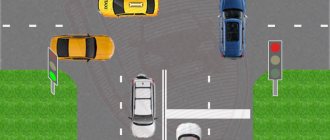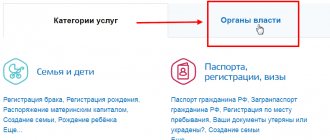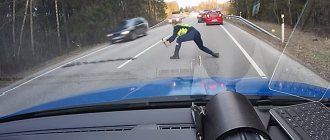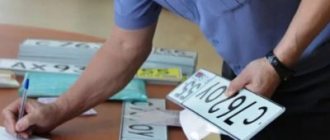Why are these documents needed?
There is a significant difference between these papers, and it is mandatory for every driver to understand it; without this, it is not even possible to correctly challenge the fine.
- A protocol is a document used to initiate an administrative case against a driver (or other road user); all data that will be important in the further consideration of the case is entered into it. It can be called the base of administrative affairs. And this is far from a fine or other type of punishment.
- Resolution is a ready-made decision of a police officer or judge on the imposition of punishment. This is already a kind of result of the consideration of the case. It is the resolution that imposes a fine, deprivation of rights, arrest and other types of sanctions.
In both documents, the signature of the person in respect of whom the case has been started or completed is required.
It is also a mistake to believe that if you disagree, the traffic police inspector does not have the right to issue a decision and is only required to draw up a protocol. This was indeed the case until recently. But several years ago the legislation was changed, and according to the law of 2021, if you challenge a traffic violation charged to you, the officer can still make a decision, that is, consider the case, but is obliged to draw up a protocol after the decision, in accordance with Part 2 of Article 28.6 of the Code of Administrative Offenses introduced several years ago .
Protocol and administrative resolution: differences
The legislation provides for a strict procedural procedure for identifying an administrative offense, including drawing up a protocol and a resolution. Despite the apparent similarities, both documents have a number of distinctive features that give them different legal force.
Distinctive features of the protocol:
- legal basis - Art. 28.2 of the Code of Administrative Offenses (CAO RF);
- drawn up by a traffic police inspector during an inspection of the scene of a traffic accident or later when signs of an administrative offense are established;
- The protocol lists information in accordance with the list of Part 2 of Art. 28.2 of the Code of Administrative Offenses of the Russian Federation, including the circumstances of the traffic accident, personal data of the driver, official, witnesses, as well as the legal basis;
- requires the signature of the official and the driver with a copy provided against signature;
- is the basis for issuing a resolution in order to bring the perpetrator to administrative responsibility.
Distinctive features of the resolution:
- legal basis - Art. 29.11 of the Code of Administrative Offences;
- contains the information listed in Art. 29.10 of the Code of Administrative Offenses of the Russian Federation, including the circumstances of the consideration of the case, a reasoned decision, personal data of the participants in the process and the deadlines for appeal;
- can be issued at the scene of a traffic accident upon drawing up a protocol or later (Article 28.6 of the Code of Administrative Offenses of the Russian Federation) with the application of a penalty in the form of a fine or warning;
- can be appealed within 10 days from the date of issue, and also be the result of consideration of the case in court proceedings in the event of a dispute between the participants in the process;
- has the force of a writ of execution and is the basis for bringing the perpetrator to administrative liability in the form of a fine, arrest, warning or other sanctions.
More on the topic: Is it legal to tint car taillights?
Thus, the protocol and the resolution on an administrative violation belong to the same area of regulatory regulation, but have different functions. The protocol serves as the basis for considering the case, and also lists the circumstances proving the guilt of the offender. Unlike a resolution, the document does not have the force of a writ of execution and does not oblige the violator to fulfill penal obligations. A fine can only be imposed after a ruling has been made!
What does a signature mean in a protocol and resolution?
These documents are required to be signed not only by the driver against whom the case is being conducted, but also by the inspector or judge himself. Obviously, the latter’s signature is needed to certify that it was he who drew up the document and entered all the data into the paper personally (with the exception of the data that the driver enters - more on that below).
Your signature is not required at all for the adoption of a resolution or protocol and in no case does it mean agreement with the violation and fine, but only regulates familiarization with these documents.
- The mandatory signature of the culprit in the resolution is stated in Part 2 of Article 29.11 of the Code of Administrative Offenses, as well as in paragraph 168 of the Administrative Regulations of Order No. 664 of the Ministry of Internal Affairs.
- The need for a signature in the protocol is prescribed by part 5 of article 28.2 of the Administrative Code and paragraph 153 of the same regulations.
You will also be interested in:
- Traffic police protocol in questions and answers
- Suspension from driving a vehicle in questions and answers
- Communication with the traffic police: what to read to improve legal literacy?
The background is as follows:
From the materials of the case on an administrative offense, it becomes clear that on the eve of 2021, the traffic police inspector of the State Traffic Safety Inspectorate of the State Traffic Safety Inspectorate of the Ministry of Internal Affairs of Russia for the city of Khabarovsk drew up an administrative protocol against a citizen under Part 1 of Article 12.26 of the Code of the Russian Federation on Administrative Offenses “Failure by the driver of a vehicle to comply with the legal requirement of the authorized official about undergoing a medical examination for intoxication.”
The situation is ordinary, but in this case there was a nuance:
“Meanwhile, in protocol No. ... on referral for a medical examination for intoxication, the date of drawing up the protocol on October 26, 2021 was corrected to the date December 18, 2016 , in the column “place of drawing up the protocol” st. Serysheva corrected on the street. Volochaevskaya, 71 , in the column “to undergo examination” the “agree” was corrected to “refused” , says the materials of the administrative case, which became the reason for the Supreme Court’s decision.
See also: The driver was able to get his license back after drunk driving through the Supreme Court
In such a simple way, the contents of the protocol reclassify a law-abiding motorist into a malicious violator and subject him to an administrative fine in the amount of 30,000 rubles with deprivation of rights for a period of 1.5 to 2 years.
“At the same time, there is no data in the case materials indicating that changes to the protocol on referral for a medical examination for intoxication were made when drawing up the specified procedural acts in the presence of (full name of the driver). The signatures of the named person opposite the changes made, as well as information about the latter’s familiarization with the changes made, are missing,” reveals another nuance of the Supreme Court.
Needless to say, the driver did not agree with this development of events. Legal proceedings began. Let us say right away that the motorist did not get the truth in the courts when considering the case.
“Inspector of the Traffic Police PDPS State Traffic Safety Inspectorate of the Regional Ministry of Internal Affairs of Russia for the city of Khabarovsk P. regarding the corrections made in the protocol on referral for a medical examination in the column “undergo examination” from “agree” to “refused” at the court hearing explained that initially (full name) driver) agreed to undergo a medical examination, but subsequently changed his mind and refused to be referred for a medical examination.
The corresponding changes regarding the refusal to undergo a medical examination were made to the protocol in the presence of attesting witnesses. The circumstances of making corrections to the protocol on referral for a medical examination regarding the change in the date of drawing up the protocol from October 26, 2016 to the date of December 18, 2021, as well as corrections in the column “place of drawing up the protocol” from the street. Seryshev on the street. Volochaevskaya, 71 were not established by the court.”
Is it possible not to sign a protocol or resolution?
Can. Despite the fact that the above-mentioned legal acts directly state that “the protocol is signed ... by the person in respect of whom it was drawn up”, “a copy of the resolution is handed over against signature to the person in respect of whom it was issued”, there is no direct obligation for the driver to sign it , as well as responsibility for refusing to sign, and nothing will happen to you for this.
If you do not want to sign the protocol or resolution, the inspector will simply make an appropriate entry about this in them. This will mean that you have not read the papers regarding you. But there may be other consequences.
Bottom line
To summarize, I would like to say that when the traffic police inspector has drawn up an administrative protocol, the rational decision for the driver would be to sign the document rather than refuse to do so. Motorists should remember that:
- a procedural document without his signature, but drawn up with witnesses, has legal force;
- For the judge, the fact of refusing the signature of the offending driver is confirmation of his guilt.
Only comments made in the protocol on an administrative offense or wording of disagreement with it will help the car owner mitigate the degree of guilt or avoid punishment altogether.
Good luck on your journey!
What happens if you refuse to sign?
We will consider the formal consequences of this and what can be expected informally, including in the form of illegal actions by government officials.
Formal consequences
They're not scary at all. The same norms of law mentioned above in 2021 state that if the person in respect of whom the protocol or resolution has been drawn up refuses to sign, they will be sent to the specified person by mail within 3 days. In practice, road inspectors can also invite two witnesses to testify to your refusal, but this is not required by law for employees.
In fact, by refusing to sign the protocol, you most likely don’t even want to see it, and, therefore, don’t even know what the inspector wrote there.
Do I need to sign the protocol?
Having understood the legal basis and the list of information that should be in this document, you can move on to considering the question of what will happen if you do not sign the protocol with the traffic police.
By its legal essence, the protocol itself is not a document on the basis of which a motorist is subject to administrative punishment.
It performs two functions.
- It is a document on the basis of which a case of an administrative offense is opened.
- Serves to record what happened, document the road situation, the driver’s actions in the situation that arose, and his attitude to what happened.
Based on these two functions, this document is one of the proofs of guilt or lack thereof in the actions of the motorist.
But in order for the protocol to serve as evidence of innocence, the motorist must write his detailed explanations in it, and also, if possible, support this with testimony. To do this, the traffic police officer must be required to enter the personal data of such persons into the protocol, and, if possible, take away written explanations from them (if they have any, and are ready to confirm that the person is right).
If the driver does not sign the traffic police report, he actually deprives himself of the opportunity to actively defend his rights at the initial stage. Therefore, it is important to immediately defend your case and justify your actions with evidence.
Now we need to pay attention to the practice of dealing with traffic violations.
She says that if you have not signed the traffic police protocol, then the employees or the court that will decide on the guilt or innocence of the driver will have a better chance of ruling on a fine or restricting any rights in relation to such a person.
Procedure for issuing protocols and decisions
In practice it works like this. If a person says that he did not commit an offense, the court or an employee of the administrative apparatus of the traffic police asks him a question why he did not express his position in the protocol itself.
Refusal to sign entails a situation where a traffic police officer indicates in the document what he needs, and may even draw up a diagram of the violation that does not correspond to reality. And a motorist who decides not to defend his rights loses time and possible witnesses to his innocence, and this entails the imposition of a fine or other restrictions on him.
Therefore, for those who are wondering what will happen if you do not sign the traffic police protocol, we can confidently say the following. Such actions play into the hands of traffic police officers, and subsequently the citizen will not be able to effectively protect himself.
Learn more about how to appeal a decision.









